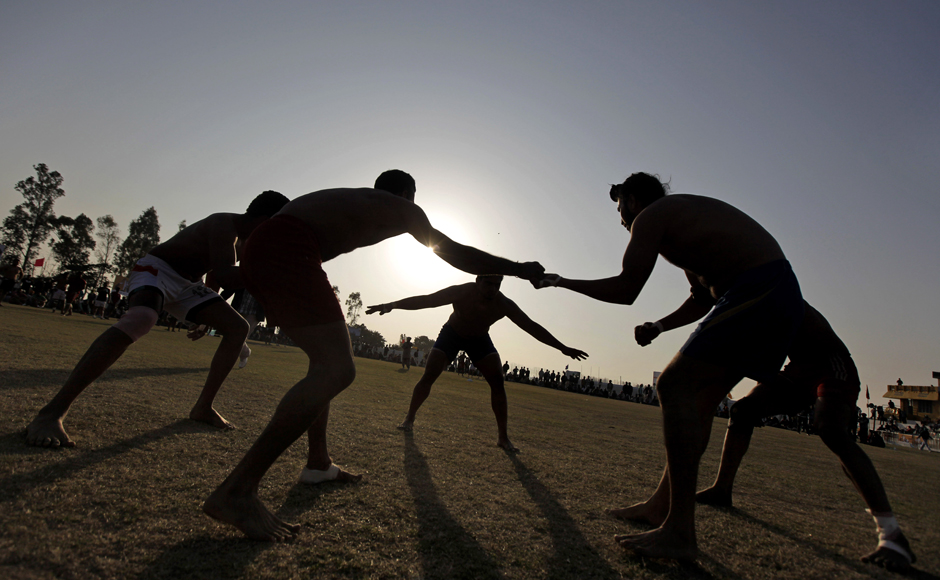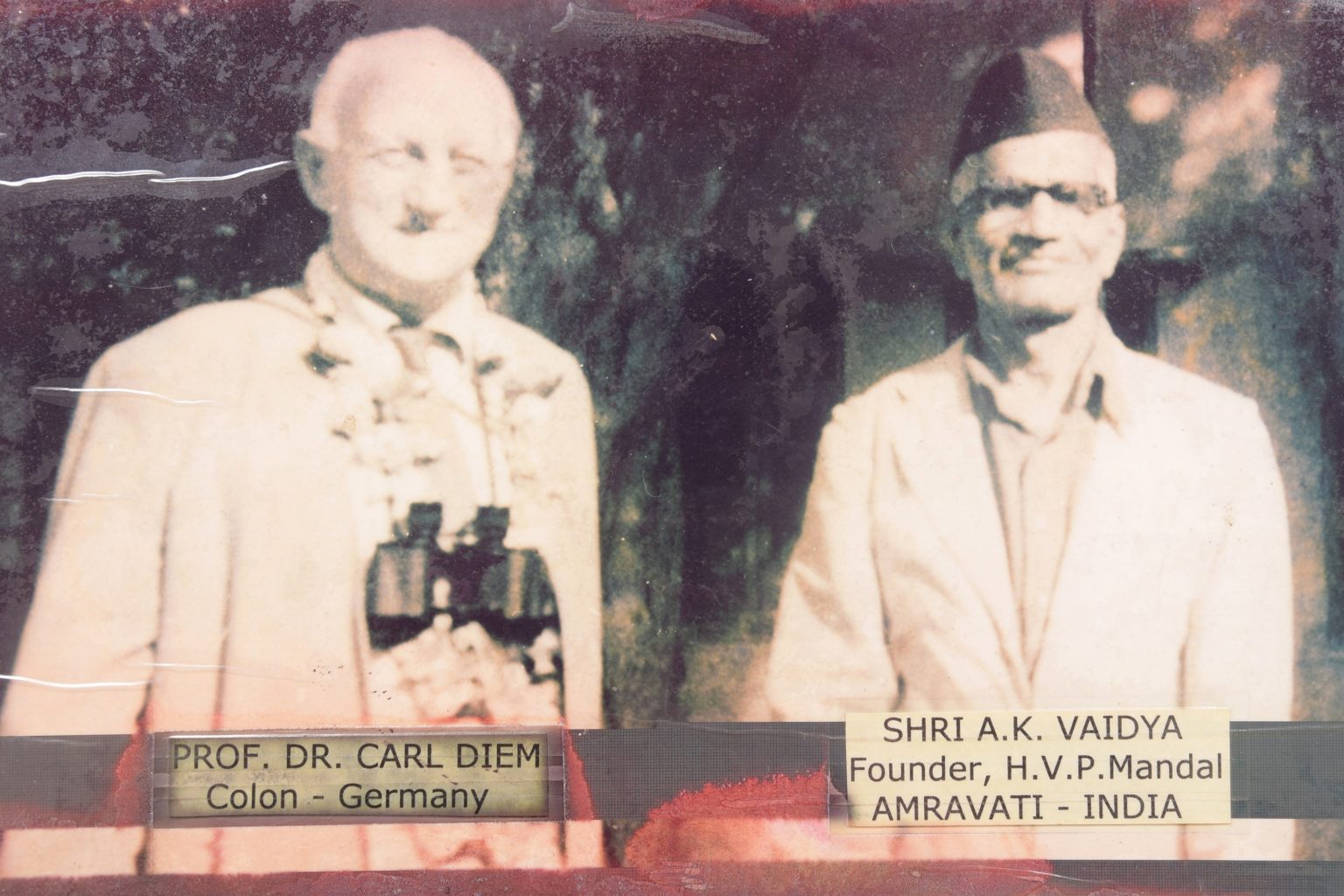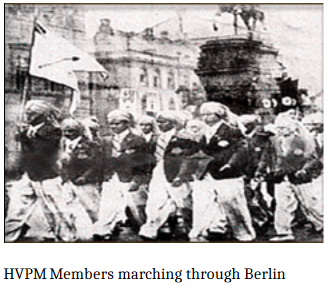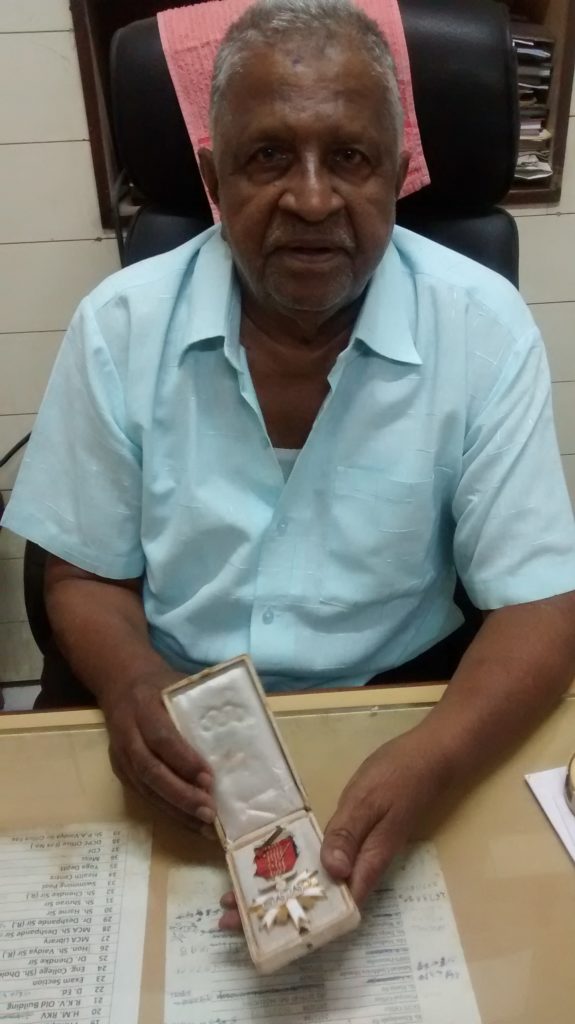Featured
Kabaddi and the Nazis

In 1936 a team of kabaddi players from the HVPM club in Amravati, Maharashtra travelled to Berlin for the infamous Nazi Olympics, resulting in a meeting with Adolf Hitler. It all came about because of a friendship between one of the club’s stalwarts, Laxmanrao Kokardekar and Dr Carl Diem.
Kabaddi by Nature by Vivek Chaudhary tells for the first time the story of this improbable event in Indian sporting history and the wider role the sport played in the nation’s freedom struggle.
This is part 2 of a three part series. You can read Part 1 here.
As he excelled in his studies in Berlin, Kokardekar came to the attention of Dr Carl Diem, who remains one of the most controversial figures in Olympic history. Although Germany had still not been chosen as the host country for the 1936 Games, he was already playing a leading role in preparing a bid as one of the nation’s leading sports administrators. He was known as the ‘father of its physical education movement’ who pioneered research in sports medicine and psychology and was also an eminent sports academic, writing a number of books and articles on its history and science. The Olympic Games were his particular passion; he was General Secretary of the German Olympic Committee and Chef de Mission of the German Olympic teams for the winter and summer Games of 1928 (St.Moritz and Amsterdam) and played the same role in 1932 in Los Angeles.
Diem still divides opinion over his role in the 1936 Games (he was officially appointed Secretary General of the Organising Committee in 1933 when the Nazis came to power). His critics accuse him of being a Nazi collaborator who, in organising a successful Olympics, provided Hitler with his most spectacular propaganda coup. But he never joined the National Socialist Party and came under fierce criticism from parts of the regime who accused him of being a ‘white Jew’, a perception based on the large number of Jewish students at the German College of Physical Education and the fact that his wife Liselott, had a Jewish grandmother.
His defenders claim that he had no other option but to compromise and successfully negotiated a difficult path to ensure that the Games were carried out within the Olympic charter. His most enduring legacy was organising the first ever Olympic torch relay (from Olympia to Berlin), which remains one of the Game’s most iconic ceremonies.

But before the debate on Diem had got underway and the Nazis even seized control, the gifted Kokardekar, who was brimming with his own ideas, became a regular visitor to his office in the Berlin college. The two would passionately exchange their thoughts and theories on sport and physical education over drinks, often long into the night. Diem showed a particular interest in the traditional sports that Kokardekar demonstrated to his fellow students, particularly kabaddi and Mallakhamb.
He was also fascinated by yoga, and learnt some asanas, which he would continue practising until his death in 1962. The young Indian in return had an appetite for hearing about the country’s Olympic vision and the German maestro’s scientific theories on the playing and teaching of sport. It was during the course of these discussions that both came to the conclusion that the world’s greatest sporting festival could be used to help showcase their ground-breaking theories. The idea of an international sports congress, which would ‘discuss physical education and witness demonstrations of traditional sports’, was born.
Kokardekar was still in Germany when it was awarded the Berlin Olympics in April 1931. In addition to his responsibilities for organising the event, Diem also set about implementing the world congress that the two had envisaged during those long, passionate discussions in his office. To give it added credibility, he decided that it would fall under the auspices of the Berlin Organising Committee, which would issue invitations to all National Olympic Associations to select a representative from their country to take part. In India’s case, there was never any doubt who that would be.
At the end of September 1936 on the HVPM’s parade ground in Amravati, Dr Shidhnath Kane told his excited audience who had gathered to welcome home the team he led in Berlin, of that extraordinary encounter. It only lasted around 20 minutes but he would continue to revel in it for years to come, sharing its details right up until his death with anybody who cared to listen; most of all with his son Padmakar, who feasted on the story with wide-eyed fascination. He treasured the photographs, newspaper clippings and despatches that his father assembled, which were eventually passed on to him; an inheritance he devotedly preserved in a box that even in his later years, after retiring as an educationist, took pride of place in his Mumbai home.
‘Does your team represent the average Indian?’ asked Adolf Hitler, drawing gasps from the crowd at the thought that the planet’s most infamous and tyrannical man had addressed the sons of their modest town.
It was a meeting that made Dr Kane more famous in Amravati than anything else he had achieved in his sporting or medical endeavours. There was one question in particular that he particularly enjoyed recounting with his son and on that day, with those assembled before him. At that point in time, the good doctor in Amravati was incapable of fully realizing that the German dignitary he had met in Berlin would go down in history as the most demonic dictators human civilization had ever created.
‘Does your team represent the average Indian?’ asked Adolf Hitler, drawing gasps from the crowd at the thought that the planet’s most infamous and tyrannical man had addressed the sons of their modest town.

It wasn’t that they or the HVPM were Nazi sympathisers; in fact, it was quite the opposite. During their stay in Berlin the team never gave the Nazi salute and neither did India’s official Olympic squad, most noticeably so at the opening ceremony when it refused to raise its arm in acknowledgement of Hitler’s regime (the United States was the only other defiant nation). The world was already aware of the horrors of the Third Reich, its predatory ambitions and visceral racism; Jews were barred from representing Germany in all sports and along with other minorities, were being eradicated from the nation’s life. But making the trip to Berlin to showcase India’s freedom aspirations through her indigenous sports was too good an opportunity to miss. Besides, the run up to the Games had been overshadowed by threats of a boycott, which had failed to materialise. The rest of the world was participating, so why not the HVPM?
During their stay in Berlin the team never gave the Nazi salute and neither did India’s official Olympic squad, most noticeably so at the opening ceremony when it refused to raise its arm in acknowledgement of Hitler’s regime (the United States was the only other defiant nation).
The 1936 Olympic Games themselves are rightly remembered for the black American athlete Jesse Owens, whose four gold medals spectacularly debunked the Nazi’s assertions of white Aryan supremacy and famously provoked Hitler to exit the stadium early in disgust. In a curious tangent to history that exists to this day, Amravati knows them as the ‘Hitler kabaddi Games’, a term coined by Dr Kane himself as he finished recounting his tryst with the Führer. But, he assured his compatriots that he had something else to bedazzle them with as he reached into the inside pocket of his jacket like a conjuror extracting a rabbit from a top hat, producing a small, shiny round object which he theatrically raised above his head for all to see.
It was adorned with a red ribbon and below that, the eagle of the Third Reich atop a Swastika. Below that, the five Olympic rings spread over a white cross. The Hitler medal. He opened an envelope containing a certificate, which was attached with a translation of the citation that came with it. He read it out loudly, first in English and then translated it into Marathi: ‘In recognition of his services to the 1936 Berlin Olympic Games. Awarded to D. Kane.’ It was signed by Hitler himself under his official title: ‘Der Deutche Reichstanzler’. The German Chancellor. The crowd cheered.
 The Hitler medal
The Hitler medal
